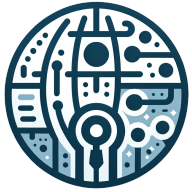7 Key Considerations for Designing Employee Benefits for a Multigenerational Workforce
In today's diverse workplace, designing employee benefits that cater to a multigenerational workforce is crucial for attracting and retaining top talent. This article explores key considerations for creating a benefits package that addresses the varied needs of employees across different age groups. Drawing on insights from industry experts, it offers practical strategies to ensure your benefits program resonates with all generations in your organization.
- Offer Flexible Benefits for Diverse Needs
- Tailor Benefits Through Employee Feedback
- Conduct Regular Surveys to Understand Preferences
- Empower Employees with Customizable Benefits
- Implement Cross-Generational Mentorship Programs
- Diversify Communication Channels for Benefits Information
- Promote Work-Life Balance Across Generations
Offer Flexible Benefits for Diverse Needs
When designing an employee benefits package for a multigenerational workforce, it's vital to understand that different age groups have unique priorities. Younger employees may prefer student loan assistance and wellness programs, while older generations often value retirement plans and healthcare. Implementing a flexible benefits program allows employees to choose options that suit their needs, ultimately enhancing satisfaction and retention across all age groups.

Tailor Benefits Through Employee Feedback
One key consideration when building our benefits package was giving people choices. We couldn't use a one-size-fits-all model when our youngest employee was 21 and our oldest was past 60.
At one point, we had team members in their early 20s working alongside folks who had already spent 30 years in the workforce. Early on, we offered only standard coverage like basic insurance and some overtime bonuses, but feedback sessions revealed gaps. Younger employees wanted help with things like gym memberships or online learning. Older employees asked for better health coverage and family leave flexibility.
We started with small changes. For example, we introduced a wellness stipend that could be used for different things; one person might use it for a yoga class, another for a physical therapy session. Later, we added voluntary health add-ons and flexible PTO that allowed older staff to take longer breaks for family care.
The real shift happened when we stopped assuming and started asking. We sent out an anonymous survey, asking employees what benefits they actually used and what they wished we offered. The results surprised us.
One of the most requested items? Financial planning help. So we brought in a local advisor for free workshops every quarter. That helped staff across all ages, from those just starting out to those close to retirement.

Conduct Regular Surveys to Understand Preferences
Regular surveys are essential for understanding the evolving needs of a multigenerational workforce. By gathering data directly from employees, companies can identify trends and preferences across different age groups. This information allows for targeted improvements in benefit offerings that cater to diverse needs.
Surveys also demonstrate that the company values employee input and is committed to meeting their changing requirements. Organizations should implement a system of periodic surveys to stay current with employee expectations and adjust their benefits accordingly. Take action now to create a survey schedule that captures the pulse of your multigenerational workforce.
Empower Employees with Customizable Benefits
Customizable benefits packages offer a powerful solution for addressing the varied needs of different generations in the workplace. By providing options, employees can tailor their benefits to suit their individual circumstances and life stages. This approach recognizes that a one-size-fits-all strategy is often ineffective in satisfying a diverse workforce. Customization can lead to higher employee satisfaction and better utilization of benefits across all age groups.
It also shows that the company respects the unique needs of each employee. Employers should explore ways to introduce flexibility into their benefits packages to accommodate the preferences of all generations. Start designing a customizable benefits program that empowers employees to choose what matters most to them.
Implement Cross-Generational Mentorship Programs
Mentorship programs that span generational divides can significantly enhance the employee experience and knowledge transfer within an organization. These initiatives facilitate the exchange of skills and perspectives between younger and older workers, fostering mutual understanding and respect. By pairing employees from different generations, companies can bridge communication gaps and create a more cohesive work environment.
Mentorship also supports professional development and can lead to increased job satisfaction across all age groups. Such programs demonstrate a commitment to lifelong learning and career growth for all employees. Consider implementing a cross-generational mentorship program to strengthen your multigenerational workforce and promote a culture of continuous learning.
Diversify Communication Channels for Benefits Information
Offering both digital and traditional communication options is crucial for effectively reaching all members of a multigenerational workforce. While younger employees might prefer digital channels, older workers may be more comfortable with traditional methods like face-to-face meetings or printed materials. By providing diverse communication platforms, companies ensure that important information about benefits reaches every employee.
This approach also shows respect for individual preferences and technological comfort levels. Effective communication leads to better understanding and utilization of benefits across all age groups. Evaluate your current communication strategies and implement a multi-channel approach to ensure all generations in your workforce are well-informed about their benefits.
Promote Work-Life Balance Across Generations
Prioritizing work-life balance initiatives is essential for supporting employees across all generations. Recognizing that each age group may have different responsibilities outside of work, companies can offer flexible arrangements that accommodate various lifestyles. This might include options for remote work, flexible hours, or sabbatical programs. By focusing on work-life balance, organizations demonstrate their commitment to employee well-being and personal fulfillment.
Such initiatives can lead to increased job satisfaction, productivity, and loyalty across the entire workforce. Employers should assess their current policies and consider implementing new work-life balance programs that cater to the diverse needs of a multigenerational team. Take the first step towards enhancing work-life balance by surveying your employees about their specific needs and preferences.

